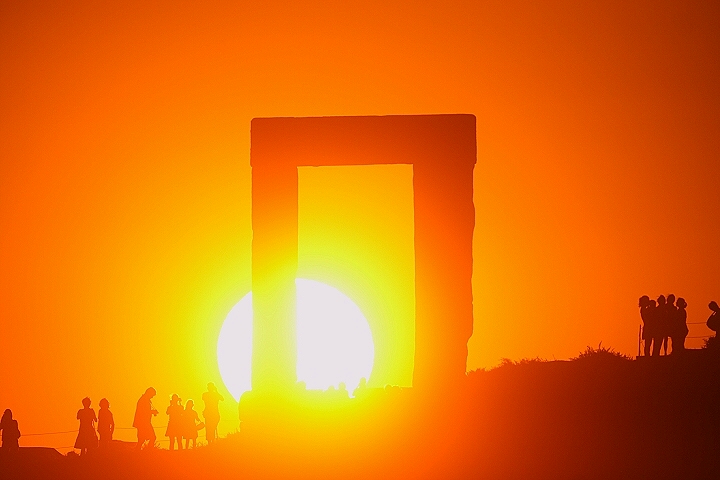
A common misconception is that the sun is larger when it is near the horizon than when it is high overhead. However, this optical illusion is
not true, for the apparent size of the sun is virtually the same when it is rising or setting near the horizon or when viewed overhead (in
fact, it is very slightly smaller when viewed near the horizon due to refraction as well as the greater added distance in observing across the
earth's radius). This illusion has been wrongly attributed to landmarks near the horizon, such as homes and trees, supposedly giving a sense
of perspective and whereas the same perspective is lost when looking at the overhead sun bathed in an empty sky. As noted by
Donald E. Simanek and
Carl J. Wenning, the real reason behind this trick by our brain is
the perception of the sun (or moon) being against a "close" or "distant" foreground and which is lucidly described by the above two references.
However, if we were approach the apparent size of the sun methodically by studying it during perihelion and aphelion, we can detect a small
change using photographic equipment thanks to the elliptical orbit of our planet around the sun which leads to variations in distance (and
apparent size) of the order of about 3.4%. More specifically, at perihelion each January, earth is approximately 147 million km away from sun
whose apparent diameter is about 32.53' whereas, at aphelion each July, earth is approximately 152 million km away and the sun is characterized
with an apparent diameter of about 31.46'. This difference of 5 million km between perihelion and aphelion leads to the slight change in the
apparent diameter of the sun as illustrated by two images of the sun captured six months apart when the sun was near its minimum possible
perihelion (Jan 2/2005) and maximum possible aphelion (Jul 5/2005) and while crossing the local meridian and which are presented
here.
Note: With aphelion for the sun being a few days away, the opportunity was used to travel to the greek island of
Naxos so as to catch the setting (aphelion) sun against the Portara and which is the primary remnant of the unfinished Temple of Apollo.
The photo below as well as two other photos from the same session (click
here and
here)
were taken from a distance of 439 meters to the southeast of the Portara and which provided the ideal location for these photos with respect
to aspect ratio, azimuth and altitude.
Note: For additional photos of the sun and/or full moon against other well-known Greek archaeological grounds
and sites, please click
here and/or
here.
|
Body: Sun Mass: 332,900 x Earth Mean Eq Diameter: 109.1 x Earth R.A / Dec: 06h 32m 07s / +23° 14' 01" Distance:
Diameter:
Magnitude: -26.8 |
 |
Date: June 28, 2008 20:28:34 UT+3 Location: Isle of Naxos, Greece (38.1083° N, 25.3767° E) Equipment: Takahashi FSQ-106/f5 Canon EOS 300D Baader UV/IR-Cut Filter Exposure(s): 1 x 1/4000 sec ISO 100 RAW Image Format 3072x2048 Image Size Manual Mode Software: Digital Photo Pro V1.6.1.0 Photoshop CS2 Processing: RAW to TIFF (16-bit) conv White Balance Contrast/Brightness Resampling (25%) JPG Compression |